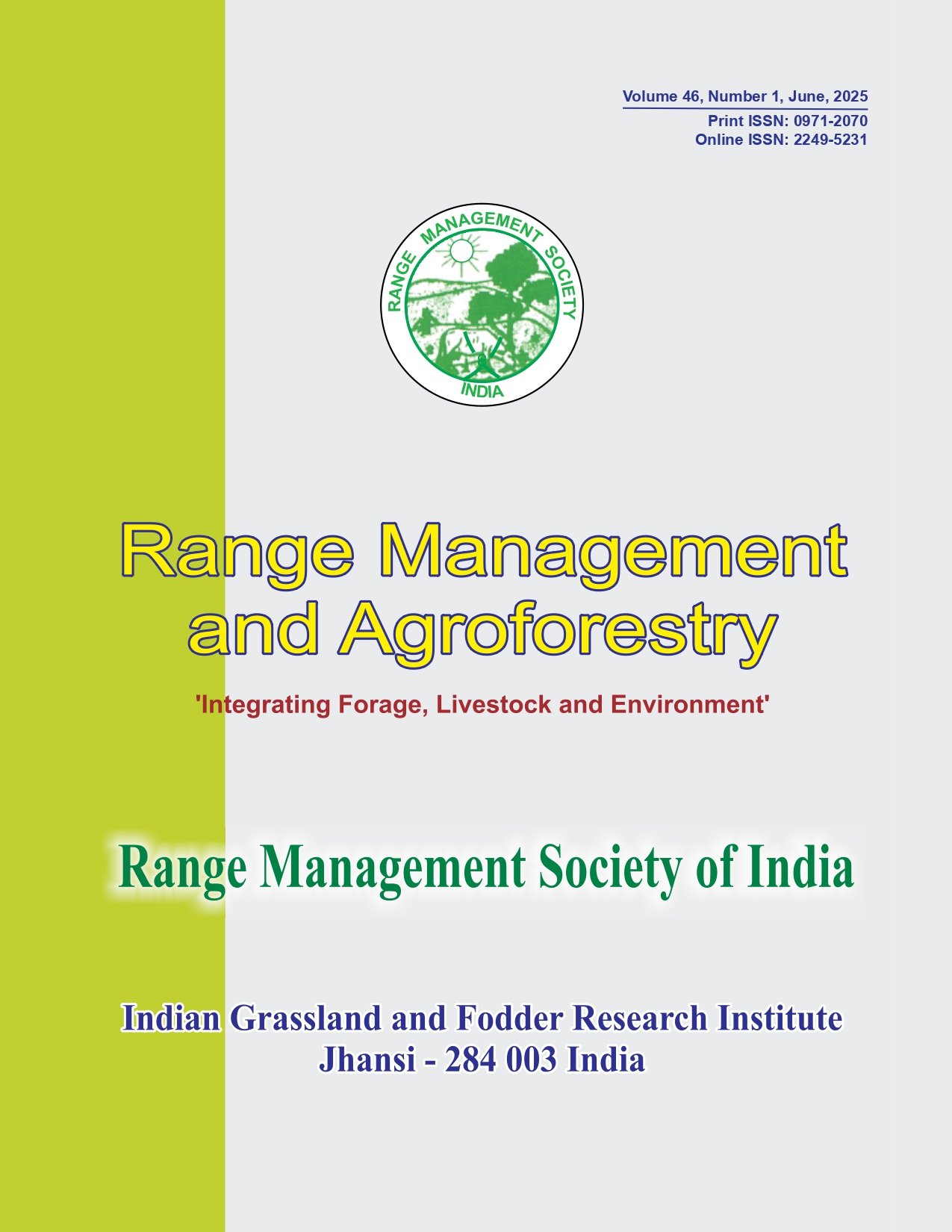Fodder yield, broom and economics of broom grass [Thysanolaena maxima (Roxb.) O. Ktze] and solar radiation interception as influenced with row proportion under different tree species in Arunachal Pradesh
Keywords:
Alnus nepalensis, Broom grass, Fodder, Fuel, Grevillea robusta, Intercropping, Morus alba, Shade, Solar radiation interception, Terminalia myriocarpaAbstract
Growth and yield attributes, yield and economics of broom grass (Thysanolaena maxima (Roxb.) O. Ktze) was compared under different row proportions and four tree species predominantly found in North Eastern Region. The growth parameters viz. height of tussock, average yield of culm, leaf length and leaf breadth were higher with Alnus nepalensis followed by Grevillea robusta. Tussock height increased with increasing row proportions. Alnus nepalensis registered higher yield attributes like number of inflorescence bearing clump (258.8 x 103 ), inflorescence bearing tiller (78.5%), inflorescence length (117.7 cm), dry matter production (9.68 Mg/ha) and fodder yield (11.95 Mg/ha). Yield performance of the broom grass followed the trend of Alnus nepalensis>Grevillea robusta>Terminalia myriocarpa>Morus alba. Yield attributes were improved under two rows than the one row, whereas, during 3rd year, yield attributes were enhanced from previous year. Correspondingly, Alnus nepalensis recorded higher economic parameters and solar radiation interception, whereas, Morus alba had lower returns.




